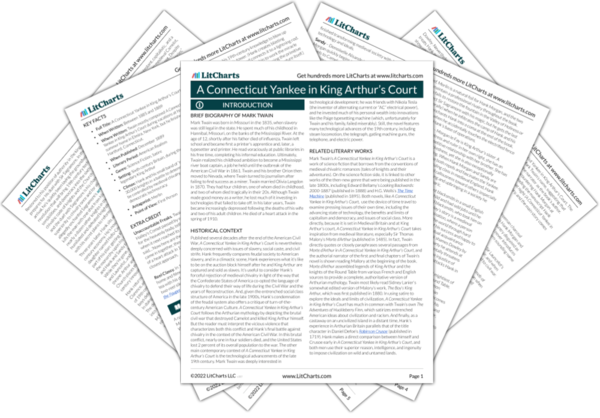Merlin’s inattention to both the fountain itself and to Hank’s presence shows how blinded he is by superstition, by extension implicating almost all the medieval people in this same blindness. This also points yet again to the power of training: reason seems to be bafflingly unavailable to the medieval psyche because their environment and culture condition them to believe in, and look for, the miraculous instead of the reasonable. But, ironically, even as he judges the medieval “savages” for their irrationality, Hank regrets not being able to play on their superstitions and fears by showing off his new bomb.
